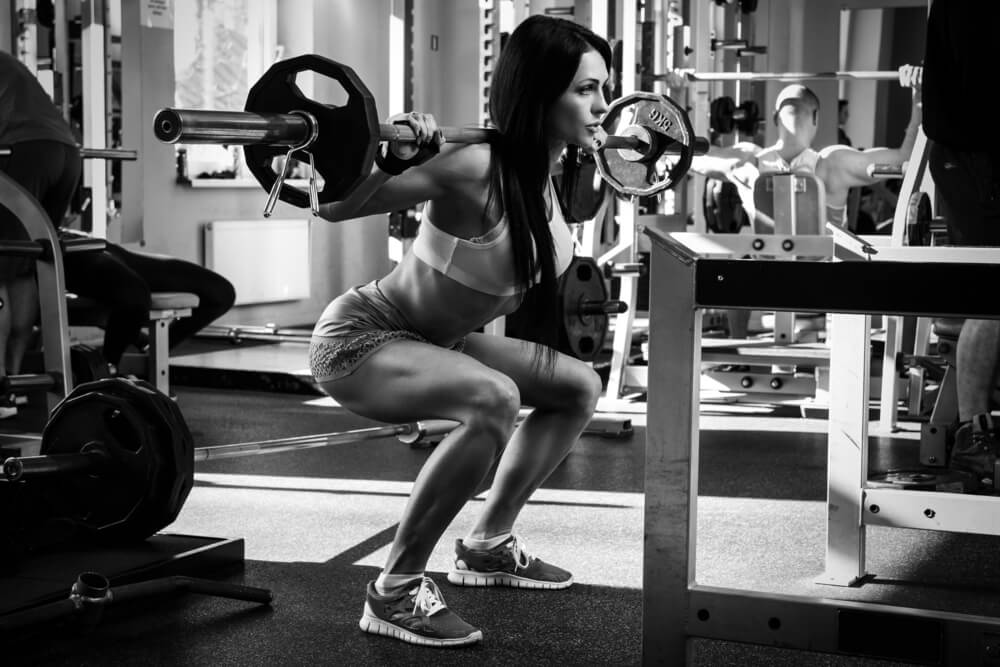
You hear it all the time…The squat is one of the most important exercises you can do. Perhaps even THE most important.
YET, most people still aren’t doing them! If you think your leg press and leg curls are a good substitute for the squat, then you better keep reading…
Maybe you associate the squat with the thought of the professional powerlifter setting 1,000 pounds across his shoulders and exerting so much pressure that blood comes out of his nose. Maybe you’ve heard squats are bad for your knees and back. Or maybe you’re just afraid to look like a dork in a crowded gym because you’re not even sure how to unrack the damned bar. If you’re first starting out I would suggest you check out beginners workout as well.
Whatever your excuses, it’s time to lay them to rest. Absent a medical restriction, the squat is a mandatory weapon in your fitness arsenal. I didn’t go wishy-washy. I didn’t say maybe. I said MANDATORY.
Mark Rippetoe echoes much of what I say when it comes to the squat…
“There is simply no other exercise, and certainly no machine, that produces the level of central nervous system activity, improved balance and coordination, skeletal loading and bone density enhancement, muscular stimulation and growth, connective tissue stress and strength, psychological demand, and toughness, and overall systemic conditioning than the correctly performed full squat.” – Mark Rippetoe
Learn How To Squat – Start With The Basics
#1 Learn the mechanics with bodyweight only
What are the mechanics?
You might ask yourself do squats really work? Well yes of course…
Feet about shoulder width apart, toes turned out about 30 – 45 degrees. Shoulders back, chest high, and tight lumbar curve. Break at the hip first and descend until your hip crease is below your knees ensuring that your knees track your toes and your weight stays on your heels. Stand up tall at the top of the motion and fully open the hip. That’s the squat in a nutshell.
I recommend using no additional weight with the squat until you are proficient with the technique described above. Notice I said proficient and not perfect. If you are dedicated to your training, you will make subtle adjustments to your squat technique for years to come. The movement does not need to be completely mastered before weight is added, but safety must be maintained.
What are the key points of safety?
Skeletal alignment is most important: a nice tight spine position and the knees tracking the toes. Next develop range of motion. Poor range of motion is usually a factor of flexibility or just simply being unfamiliar with the movement. Once you can maintain good posture and knee positioning as well as hit good depth (at least parallel) with the squat, it’s time to add some weight.
As an aside, don’t believe any of the bullshit you hear about squatting being bad for your knees. Here’s another quote from Coach Rip that suits this perfectly…
” Anyone who says that full squats are “bad for the knees” has, with that statement, demonstrated conclusively that they are not entitled to an opinion about the matter. People who know nothing about a topic, especially a very technical one that requires specific training, knowledge, and experience, are not due an opinion about that topic and are better served by being quiet when it is asked about or discussed. For example, when brain surgery, or string theory, or the NFL draft, or women’s dress sizes, or white wine is being discussed, I remain quiet, odd though that may seem. But seldom is this the case when orthopedic surgeons, athletic trainers, physical therapists, or nurses are asked about full squats.” – Mark Rippetoe
Got that? Squat deep!
#2 Add The Weight Slowly
Start with just the bar. Or even a broom stick or dowel rod if you want to be extra safe. Having a bar across your shoulders will change the movement slightly, especially if you were keeping your hands in front of you for balance with the bodyweight only version of the squat (video above).
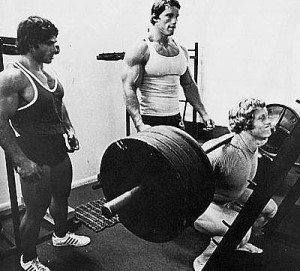
If you are new to the squat, err on the side of caution until you get comfortable with the movement. Break out those little two-and-a-half pound plates that you never use and increase the weight slowly.
But do increase the weight as your comfort with the movement grows. Adding weight to the bar will often improve your technique as the increased resistance will force your body into the most efficient plane of movement. And that’s really all good technique is: the most safe and efficient method to get the task done.
#3 Get A Coach (Even If It’s Yourself)
The best way to improve your squat is to get with a knowledgeable coach or trainer. Under their watchful eye, they can give you cues to let you know when you have the movement dialed in. They can also let you know when you are veering into unsafe territory.
But hey, you might be thinking you can’t afford a trainer. Well how expensive is languishing in the gym with poor results for months or years on end? Or worse – how expensive is blowing your knee or rupturing a disk because you were too cheap to pay for a trainer? Hire a qualified trainer for one hour and ask him to teach you the squat, deadlift, shoulder press and bench press. It will be the best $70-$100 you’ve ever spent at a gym…
If that’s out of your price range find someone who is a good powerlifter at your gym… Most powerlifters will actually know the squat better than a lot of globo gym trainers will.
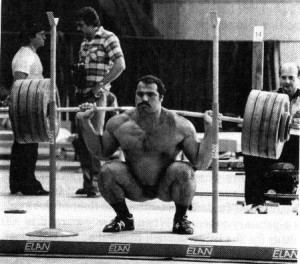
That being said, I know that there are those of you who truly may be in a financial state that coaching is not an option. For you I recommend video taping your technique and comparing it against video that can be easily obtained on YouTube or even on my blog here…. But then don’t you have to BUY a video camera? Borrow one, damn it. Quit making excuses and either hire a coach or figure out how to get yourself on film.
I know stepping under that bar can be intimidating at first. But I promise you that taking the time to learn the proper squat technique is some of the best time you can spend towards improving your fitness.
What are some questions you have about the squat? Let me know in the comments below….
And if anyone mentions the Smith machine, I swear I’m going to smack you with a power rack all the way from Columbus, Ohio.
– Vic
Here’s a few more resources you might like on the squat…
- My video and article with more indepth squat instruction…
- AJ Robert’s amazing video coaching me through the squat…
- Mark Rippetoe’s Starting Strength Book (highly recommend this)
Latest posts by Vic Magary (see all)
- What’s the Healthiest Alcohol? - Apr 23, 2013
- Destination X—What’s The Exact Body You Want? - Mar 9, 2013
- How to Save Money while Eating Super Healthy - Mar 8, 2013




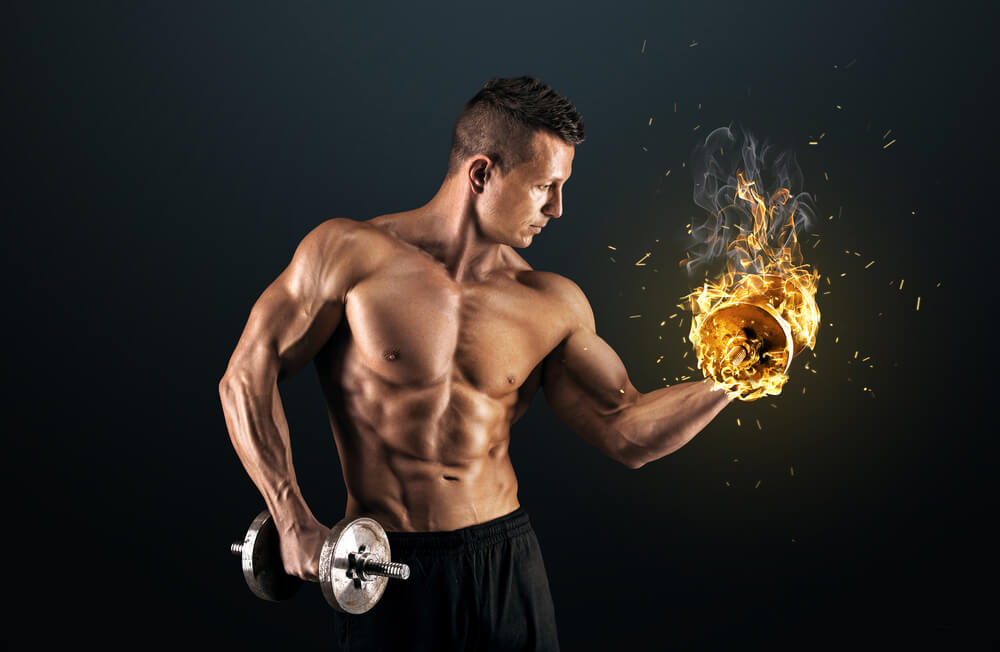

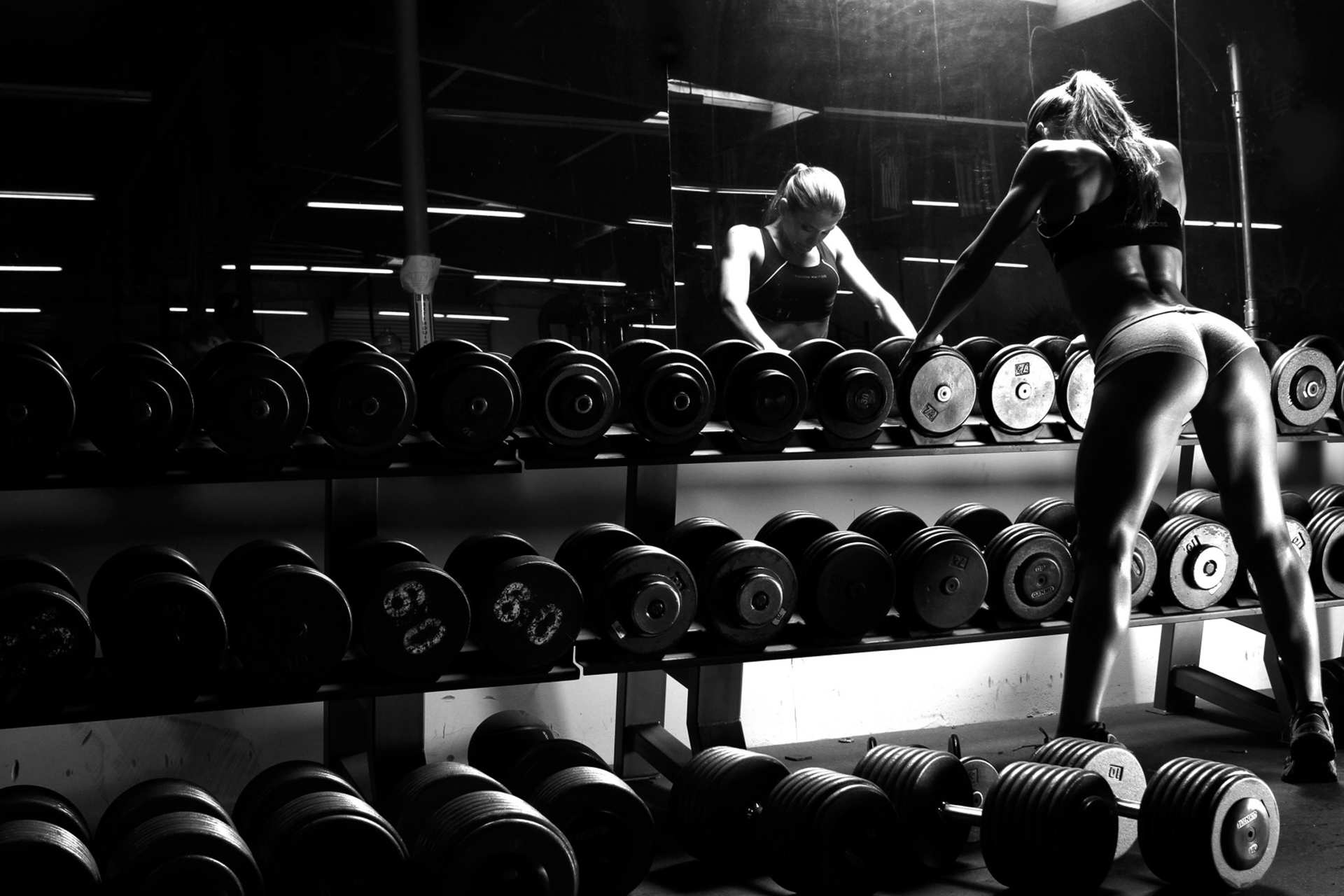






Hi Vic Magary i have got an lower back(L4 and L5) surgery 6 months before my doctor said to me refrain from lifting weights in that case should i do these exercises with light weights like Squat, Power clean and Deadlift, burpees
If the doc said to refrain from lifting weights, then do not do these exercises at all until you get clearance from your doctor. Train hard, but train safe.
How about machine weights for a while…at least you can isolate your ‘out of play muscles’ and maintain mass?
I go no love for the machines. Nor isolating muscles. Especially when it comes to the squat.
iHi Vic,
I do lots of squats, and would add that keeping the toes slightly raised from the floor helps maintain proper form. Also, if I do squats without weights, am I losing out? thanks,Rosalie
Raising the toes can help people keep the weight on the heels and is a cue I sometimes use with clients. Are you losing out if you don’t squat with weight? Quite possibly, yes. Of course that depends on your current fitness level, level of proficiency with the squat, and your reasons for training. But if I have to speak generally, bearing extra weight with the squat will yield benefits that bodyweight only squats cannot replace.
Thanks for helping get the word out on Squats Vic. At the YMCA I train at I am the only person there (that I have seen) who uses the power rack to do full squats. If I go there in the afternoon there is always some bonehead doing bicep curls in it (WTF?!) and in the early mornings someone is will be using the smith machine to *slightly* bend their knees.
Last week I even had a local highschool gym teacher comment to me “I don’t know how you go down so low, thats pretty impressive.” I just said I started light and added weight slowly (at 215lbs now, about my own bodyweight).
I almost wish more people would see the benefit of a real squat, but then when I think about it, theres only 1 power rack at the YMCA and luckily it is free pretty much whenever I need it.
Oh man! Few things burn my ass more than seeing someone use the power rack for bicep curls!
Keep on squatting, man!
Hi Vic, first off love the site, and love the workouts.
I have a question about weighted squats…
Since starting your workouts and adding weighted squats to my workouts, I have been doing them with the bar resting on my shoulders, behind the head… what I would consider a ‘traditional’ squat.
However, I see a fair number of people in the gym doing weighted squats with the bar in front of them, resting on their breastbone area. With their arms crossed over one another….
In simplest terms…. what’s the difference in the two?
Thanks!
Gene/Richmond, VA
Great question, Gene. What you are referring to is a Front Squat. I know of experienced lifters who actually prefer the front squat to the back squat. Personally, I find the rack position across the front delts uncomfortable and prefer the Back Squat. Is there that much difference in muscle stimulation between the two? For your average to even intermediate fitness practitioner I say “no”. I say use both, or the one you feel most comfortable with. I notice that for me the front squat seems to involve more core stability work, which can certainly be beneficial. Some people claim the front squat works the lower quadriceps (close to the knee) more than the back squat, but that sounds too much like an isolation argument that I don’t want to get into.
I do have to admit that when considering everyday activities like picking up your couch or your child, the front squat comes closer to where weight is loaded “in real life”. My bottom line opinion is that the front squat is worth trying to see for yourself if you would like to add it to your fitness regimen.
Thanks for the in-depth answer. I like your approach as well… “Try it out, see if it works.”
I’ll give the front squat a try next time.
Thanks for the post Vic. I have been avoiding the squat for far too long but I suppose I really should make it part of my routine – even if I do have to start with no weight.
Starting with no weight is fine. A drill I often use with clients is 100 bodyweight squats for time. It’s a great finisher for the day!
I learnt how to squat through on line resources. I’m interested to know if you reccomend high bar or low bar squats.
With trainers, I’d be careful because a trainer taught me to do squats with both feet facing forwards (no 30 degree angle), using the smith machine and with a pathetic range of motion. Since then I decided to make my own gym and not listen to trainers and know it all Captain Upper Bodys.
Captain Upper Bodys! Love it! Thanks, that is great. 🙂
I prefer and use with all of my clients the high bar squat. That meaning the bar is placed across the “shelf” made when the shoulder blades are pinched together. Thanks again!
Feel free to use that one.
Great post Vic! Even though you already have a “How to Squat” video in your blog this was necessary. Have made the squat “Mandatory” in my work out coach! Struggling a little but will get there I guess. Have read all the instructions carefully. You have outlined it so well that I don’t think I could do anything differant had you been there to coach me personally.
Good to hear you found this post beneficial. And even better to hear the “mandatory” status the squat has in your workout. Train hard!
Hiya Vic
As you know, I train from home. I don’t have a bar and weights. Is there a dumbell or other method you could recommend for adding weight?
Regards
Tusc 🙂
Yep, you definitely can use dumbbells for the squat. You can hold the dumbbells with the arms extended at the sides. Although this may appear to be more of a deadlift due to the arm positioning, if you descend with the movement until the hip crease is below the knee – I consider that a squat. You can also rest the dumbbells on the front of your shoulders with your elbows pointing forward. This position can be a little unstable before you get used to it, so be careful if you use it. Train Hard!
I always worry about my knees and neck where squats are involved. Generally I end up doing 1/2-squats with dumbbells. What’s your opinion, good or bad idea?
Bad idea in my opinion. I’d rather see you do bodyweight only squats at full range of motion than half squats with dumbbells.
Great post. A former bodybuilder told me years ago that doing squats was THE most important exercise you could do for the legs and the overall lower body. It still amazes me how so many people still don’t point their feet in the right direction when they do the exercise and damage their knees in the process.
Hi Vic – Do you ever run into the issue of clients having a hard time with the weight and pressure of the bar on their shoulders? I run into this sometimes. As much as I try to keep the bar “low” (not on my neck) there’s so much pressure on the muscles where the bar rests on my upper back that I can often feel it for several days afterwards. As it stands I am reluctant to increase weight beyond what I’m doing even though I’d like to continue to go heavier because I’m worried I’m messing with my back! What am I doing wrong? THANKS!!